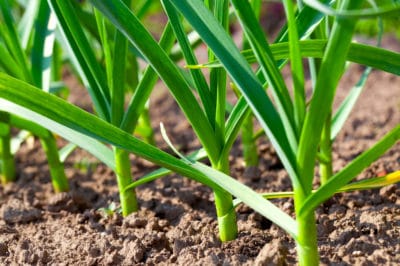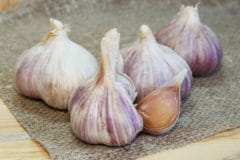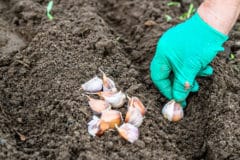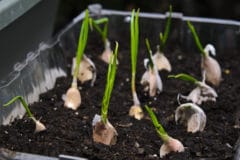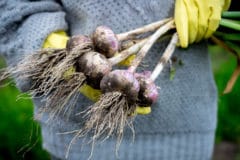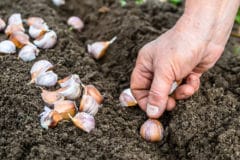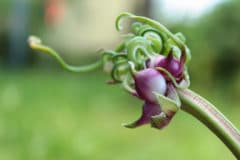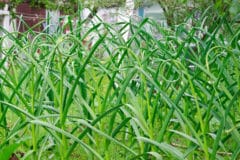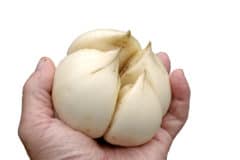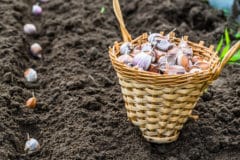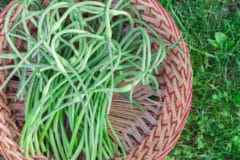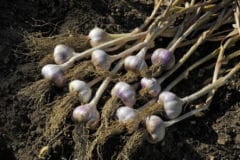Garlic Types
Garlic is available in hundreds of varieties but only two types. Hardneck garlic forms fewer cloves but they are large. This type also sends up a flowering stalk (the hardneck), which produces flower buds that can be harvested and used just as you would the cloves. Some people feel hardneck garlic has more complex flavors. Softneck garlic produces more but smaller cloves, can be braided and stores longer.
Selected Varieties
Garlic varieties are legion. Some experts say there are may be as many as 600 cultivars, although some are only available from specialty sources. Here are some widely available varieties:
- Inchelium Red – 90-240 days, softneck, Native American variety, stores six to nine months.
- Spanish Roja – 90-240 days, hardneck, Northwest heirloom.
- Music – 90-240 days, hardneck, heavy producer.
- Chesnok Red – 100-270 days, hardneck, good for baking.
Growing Good Garlic
In addition to its requirements for rich, loamy, well-drained soil, garlic has relatively high water needs. However, soggy soil can cause problems. Water often enough to keep the soil from drying. If the top inch is dry, your garlic needs water. Site your garlic patch for full sun if possible. If not, go for morning light and afternoon shade. Garlic must have at least six hours of sunlight daily to produce good cloves.
Planting Time and Maturity
Although garlic varieties have expected maturity dates, when you plant makes a big difference. Garlic planted in fall – which many experts recommend – has several months of semi-dormancy in which only the roots grow. The strong root system promotes excellent top growth in spring. For fall-planted garlic, you should add about 60 days onto the published maturity date. Spring-planted, garlic, however, will be closer to the published maturity date.
When to Harvest
No matter what the published maturity date, your plants will give indications that they’re ready to harvest. Hardneck garlic will send up flowering stalks (scapes), an indication that harvest is about six weeks off. Cut the scapes off to promote clove growth. The leaves of both kinds will also begin to dry at the base. Once half the leaves are dry, your garlic should be ready.
